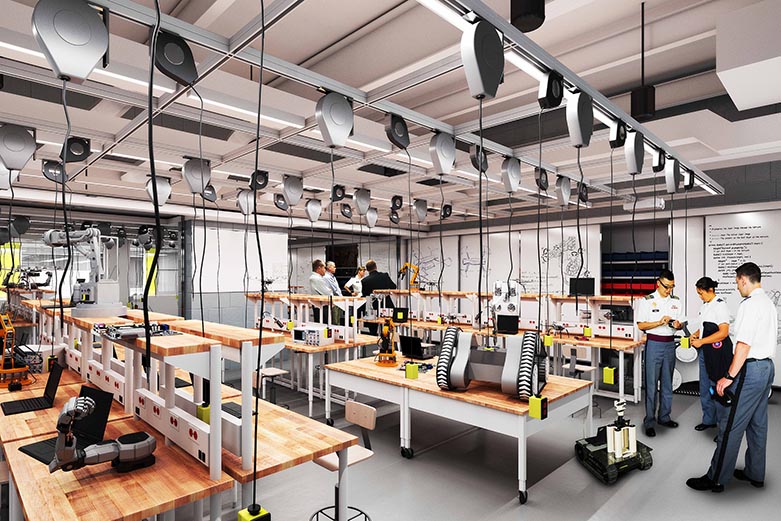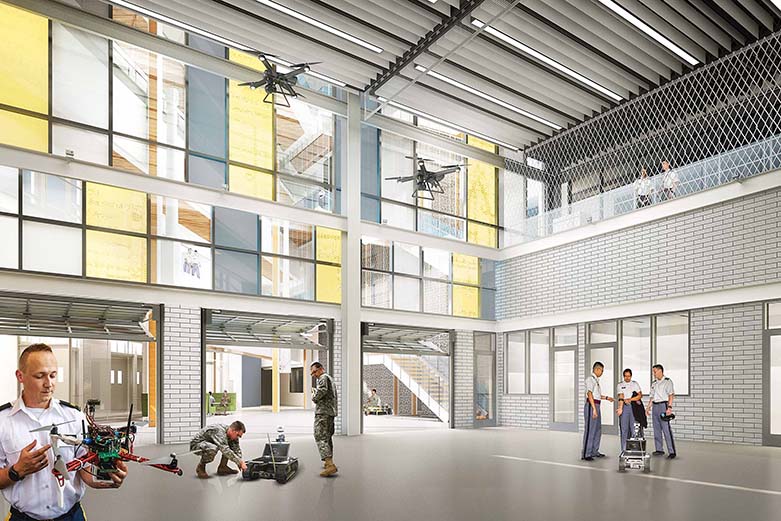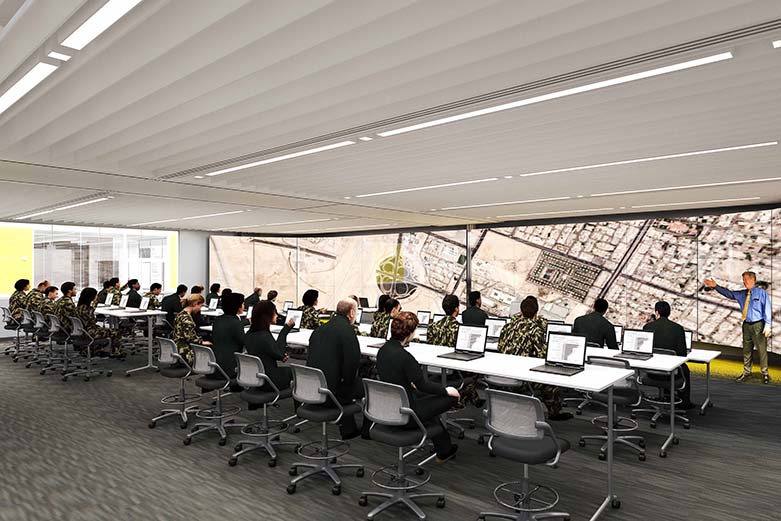Cyber & Engineering Academic Center
Cyber & Engineering Academic Center
Breadcrumb
About
Preparing Cadets to Win on the Highly-Technical, Multi-Domain Battlefield
“The Army of 2028 will be ready to deploy, fight, and win decisively against any adversary, anytime and anywhere, in a joint, multi-domain, high-intensity conflict, while simultaneously deterring others and maintaining its ability to conduct irregular warfare. The Army will do this through the employment of modern manned and unmanned ground combat vehicles, aircraft, sustainment systems, and weapons, coupled with robust combined arms formations and tactics based on a modern warfighting doctrine and centered on exceptional Leaders and Soldiers of unmatched lethality.” – The Army Vision
Achieving this vision of readiness for the battlefields of the future requires smart, innovative and technically competent leaders. Developing those leaders requires modern, top-flight facilities to deliver engineering and cyber education programs that anticipate Army needs and prepare our leaders for that future environment.
Construction is underway ... check out our progress here!

The Cyber and Engineering Academic Center (CEAC) at West Point is a modern academic facility that will enable and inspire collaboration across engineering disciplines. The CEAC will house the engineering laboratory functions of the Departments of Civil & Mechanical Engineering, Electrical Engineering & Computer Science, and Systems Engineering together under one roof. This 136,000-square-foot state-of-the-art facility will facilitate a powerful and broad impact within science, technology, engineering, and mathematics (STEM) scholarship and industry.

The CEAC will:
- Modernize the Academy’s engineering, technology, and mathematics capabilities, and will include laboratories with support space, project fabrication spaces, high bay areas with overhead lift, work spaces, conference rooms, spray booths, and an assortment of other advanced capabilities for our engineering disciplines
- Help to compensate for significant shortages in academic space relative to industry standards in higher education and Army space authorizations that cannot otherwise be acquired by other means such as renovation and modernization
- Enable us to remain at the forefront of engineering education, putting us in a far more advantageous position to compete for the most talented and innovative cadets and civilian faculty
- Set critical conditions to enable our broader Academic Building Upgrade Program (ABUP) by creating much-needed space to enable the programmatic and logistical aspects of our mission throughout execution of the ABUP program

The CEAC’s award-winning design will provide wide-open, state-of-the-art spaces for project-based learning and designing/building solutions to real problems, resulting in a modern learning environment that encourages collaboration across the artificial boundaries created by organizational structures and physical spaces. This will allow the Academy to achieve a modern, adaptable, and inspirational level of engineering education that simply cannot be achieved in the current 1960s-style academic buildings/classroom spaces.

The CEAC will feature two proposed critical donor-funded enhancements (subject to the availability of funds raised) that will ensure that the facility achieves its goal of integrating academic programs and projects across disciplines while showcasing an exterior that honors West Point’s traditions and heritage. These include
- The Redoubt: A fourth floor that increases collaborative spaces for cadets and faculty to engage with each other and host notable speakers in a setting that offers views of the Hudson River and looking north across Central Area.
- The Gateway: A bridge connecting the CEAC to Mahan Hall, which forms an iconic entrance to West Point, enhances the accessibility of both facilities for cadets, staff, and faculty; and increases the number (and enhances the quality) of individual and group study spaces for cadets.
West Point is committed to ensuring that cadets have an opportunity to work together to grapple with the technology that will shape the future battlefield. The CEAC will put our science, technology, engineering and mathematics disciplines shoulder to shoulder in the same spaces, working together with their humanities and social science partners to create innovative solutions and learn the skills needed for a modern, technical Army.

Aerial view of the CEAC (looking north)

CEAC cadet entry at night

Robotics high bay

Robotics high bay

Project management lab

Second floor atrium

Aerial view of the CEAC construction site (October 2021)

Aerial view of the CEAC construction site (October 2021)

Aerial view of the CEAC under construction (December 2022)

Aerial view of the CEAC under construction (January 2023)

Aerial view of the CEAC under construction (January 2023)